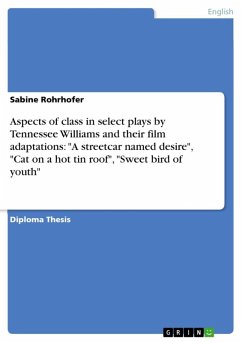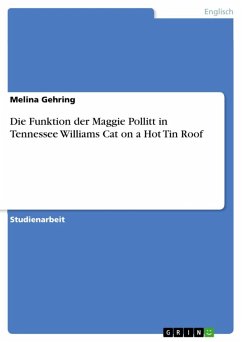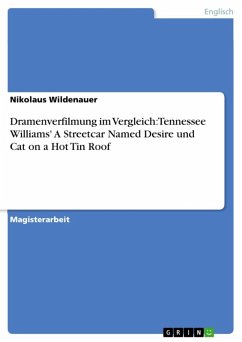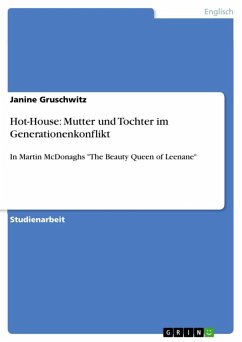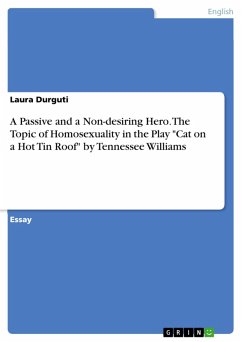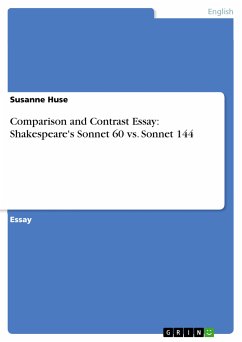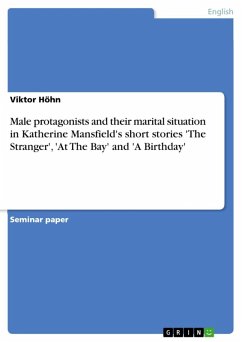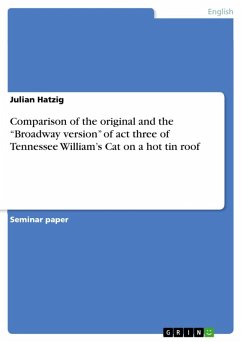
Comparison of the original and the "Broadway version" of act three of Tennessee William's Cat on a hot tin roof (eBook, ePUB)

PAYBACK Punkte
0 °P sammeln!
Seminar paper from the year 2010 in the subject English Language and Literature Studies - Literature, grade: 2,0, Ruhr-University of Bochum, language: English, abstract: The play Cat on a hot tin roof by Tennessee Williams is one of the most popular plays in the history of the American theatre. "That play comes closest to being both a work of art and a work of craft," Williams wrote in his Memoirs. It is fact that Tennessee Williams liked "Cat on a hot tin roof" a little bit more than his other plays. He liked it even more than "A streetcar named desire" which is often referred to as his best ...
Seminar paper from the year 2010 in the subject English Language and Literature Studies - Literature, grade: 2,0, Ruhr-University of Bochum, language: English, abstract: The play Cat on a hot tin roof by Tennessee Williams is one of the most popular plays in the history of the American theatre. "That play comes closest to being both a work of art and a work of craft," Williams wrote in his Memoirs. It is fact that Tennessee Williams liked "Cat on a hot tin roof" a little bit more than his other plays. He liked it even more than "A streetcar named desire" which is often referred to as his best and most famous play. You can argue about statement, Cat on a hot tin roof being his best work, but you will not be able to argue the success, the play had, away. First played on March 24, 1955 Cat on a hot tin roof won the Pulitzer Price as well as the New York Drama Critics Circle Award as the best American play of the season. It furthermore became Williams's longest running show ever with 692 performances. What I will be dealing with subsequently is the most interesting aspect of the plays Broadway version. To be more precisely my topic will be the third act of the play, which is different compared to the original version. First I will give a brief summary of the original version of the third act. This will be followed by the naming of the similarities and the biggest differences between the two versions. Then, it is very important in my opinion to close, answering some upcoming questions about the two versions of act three. "Who had the idea to change the third act for the performance on Broadway?" and "Why did the changes take place and what were the ideas behind them?" I think with the help of my described approach I can cope with the task to compare the original and the Broadway version of Tennessee Williams Cat on a hot tin roof.
Dieser Download kann aus rechtlichen Gründen nur mit Rechnungsadresse in A, B, BG, CY, CZ, D, DK, EW, E, FIN, F, GR, HR, H, IRL, I, LT, L, LR, M, NL, PL, P, R, S, SLO, SK ausgeliefert werden.




